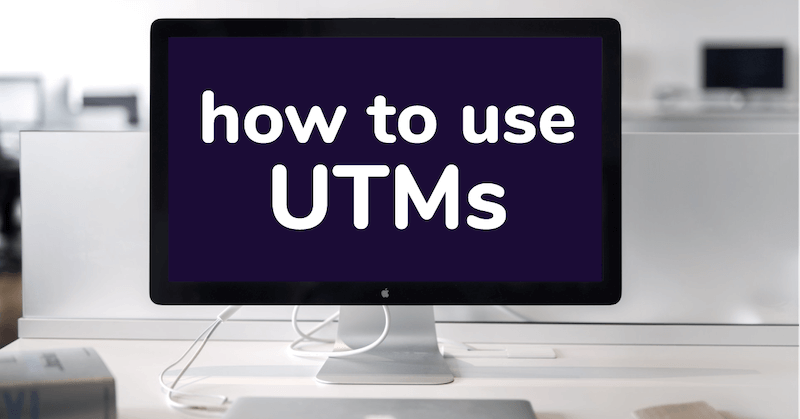How to use UTMs for your marketing goals

As we recently discussed, UTMs are small but powerful. With these snippets of code in your advertising arsenal, you can gather granular data that will enable you to make informed decisions. But how do you use them, and what can they do for your marketing efforts? Let’s dive right in, starting with some of the benefits. Here’s how to use UTMs.

How to use UTMs: Keep your marketing efforts organized
Let’s face it: campaign data without detailed attribution can easily just become noise. If you want to know what works and what doesn’t when it comes to your digital campaigns, UTMs are the answer! As a refresher, UTMs can track 5 different parameters alone or in combination:
- Campaign – tracks the performance of a marketing campaign by name
- Source – lets you know where your traffic came from
- Medium – tells you what kind of channel sent traffic (paid social, organic social, email lists, display, etc.)
- Content – allows you to track what type of content the user clicked on
- Term – tracks keywords that brought people to your site
As you can see, these parameters can give you powerful campaign insights. Want to track whether more people are clicking on your top banner or your sidebar links? UTMs can track that. Curious whether you’re getting more payoff from search or paid social ads? UTMs can track that. Interested in tracking both of those things together? UTMs can track that. Getting granular with your tracking will allow you to check at a glance to see which of your efforts are paying off.

How to use UTMs: A/B test your creatives
We’ve already gone over the benefits of A/B testing your creatives. UTMs are a fantastic way to gather the data for an A/B test. If you are trying to decide between two different color schemes for your cereal ad, you can have separate UTM codes for each and track the results! With UTMs, you can test between options to find which colors, imagery, placement, and platforms perform best. If you’re looking to get into A/B testing, there’s no better place to start than UTMs.
How to use UTMs: Make informed budgeting decisions
UTMs can benefit many aspects of your marketing, but at the end of the day, all those benefits affect one thing: your bottom line. Your business budget has limits, and therefore you have to be choosy about how you spend your money. It can be hard to know how to allocate your budget if you don’t know what has worked well in the past. You might feel that promoted Facebook posts have had the highest success rate, but have they really?
UTMs can tell you not only that someone came to your site via Facebook, but also that they clicked on a blue ad that was part of your paid social campaign advertising a free trial of your product. They give you a way to find out what’s working – and what isn’t. No need for guesswork when it comes to allocating your marketing budget. In the end, that will save you money.
Now that you have a better idea what they can do for you, here are some tips to keep in your back pocket as you consider adding UTMs to your marketing strategy:
- Remember that UTMs are visible to users! Though at a glance they appear like code, they’re actually quite easy to read and decipher. Most of your audience likely won’t take the time to read your UTM parameters in depth, but just keep in mind that they will be able to see them.
- Don’t use them on internal links. We won’t get too into the weeds here, but basically, using UTMs on internal links will give you bad website data. It will artificially inflate the number of separate visits to your site, as well as your bounce rate. It can also lead to incorrect attribution of your conversions. Bottom line – UTMs should only be used when you are linking to your site from some other source.
- Keep your naming system consistent. For example, if you want to track your SEM results, make sure you stick to one naming convention, because “utm_medium=search” and “utm_medium=sem” would be counted separately.
- Make sure to remove UTMs when copying links. The one drawback of UTMs is that once the link is out there, if someone copies and pastes it, it can muddy your data. This isn’t generally a massive problem, but it is something to be aware of. As a best practice, if you are copying a link to share it, make sure you remove the UTMs.
Those are the basics of how to use UTMs! If you’re at all interested in getting detailed insights into what’s working with your marketing – and who isn’t? – you need to give UTMs a try. Though they may be small, the impact they could have on your budget is huge.


